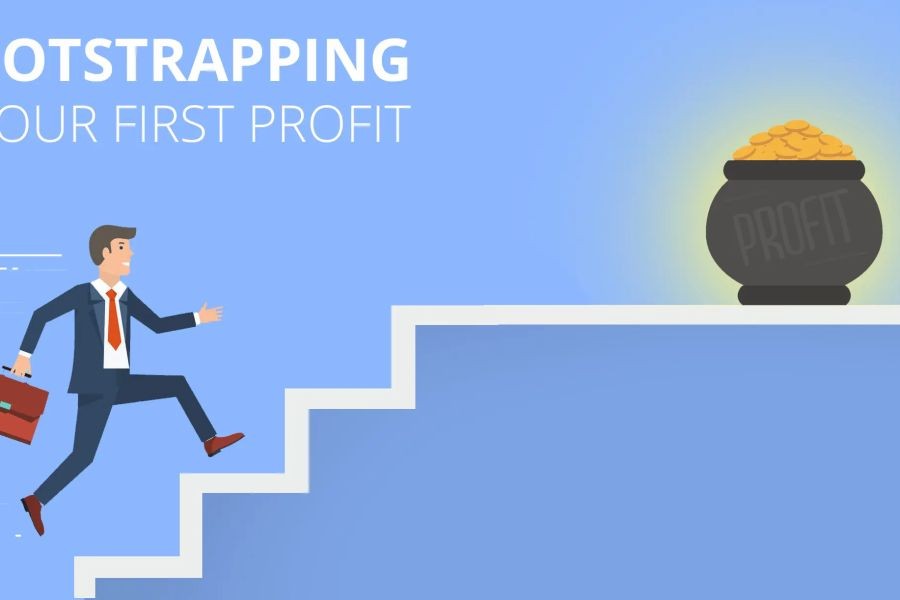In the dynamic landscape of Australian startups, the decision between venture capital and bootstrapping can significantly influence a company's trajectory. While venture capitalists offer financial resources and strategic guidance, bootstrapping allows entrepreneurs to retain control and ownership. This article delves into the intricacies of both approaches, providing data-backed insights and real-world examples tailored to the Australian context.
Understanding venture capital and Bootstrapping
venture capital involves raising funds from investors who take an equity stake in the company. This approach often provides startups with significant financial resources, enabling rapid scaling and access to a network of industry connections.
Bootstrapping, on the other hand, relies on personal savings, revenue, or loans to fund a business. Entrepreneurs maintain full control over their company but may face slower growth due to limited resources.
The Australian Startup Ecosystem
Australia's startup ecosystem has seen substantial growth, with cities like Sydney and Melbourne becoming hubs for innovation. According to Australian Bureau of Statistics (ABS), the number of startups has increased by 5% annually over the past five years. This growth is supported by government initiatives such as the R&D Tax Incentive and the Early Stage venture capital Limited Partnerships (ESVCLP) program.
venture capital in Australia: Pros and Cons
venture capital has played a crucial role in propelling Australian startups into the global arena. Companies like Canva, which secured $60 million in a funding round led by Sequoia Capital, exemplify the potential for rapid growth through VC investment.
- Pros:
- Access to Capital: venture capital provides substantial financial resources, enabling startups to scale rapidly.
- Strategic Guidance: Investors often bring valuable industry experience and networks.
- Credibility and Exposure: Being backed by reputable VCs can enhance a startup's market perception.
- Cons:
- Equity Dilution: Entrepreneurs may have to relinquish significant ownership stakes.
- Pressure for Rapid Growth: VCs expect quick returns, which can lead to high-pressure environments.
- Loss of Control: Investors may influence business decisions, potentially clashing with the founder's vision.
Bootstrapping in Australia: Pros and Cons
Bootstrapping remains a popular choice for entrepreneurs seeking autonomy. Atlassian, a renowned Australian software company, famously bootstrapped its operations until it went public in 2015.
- Pros:
- Full Control: Entrepreneurs retain complete ownership and decision-making authority.
- Focus on Profitability: Limited resources encourage efficient operations and early profitability.
- Flexibility: Founders can pivot quickly without investor constraints.
- Cons:
- Limited Resources: Growth may be slower due to financial constraints.
- Risk of Burnout: Entrepreneurs may face high stress from managing multiple roles.
- Scaling Challenges: Without external funding, scaling operations can be difficult.
Real-World Case Studies
Case Study: Canva – venture capital Success
Canva, an Australian graphic design platform, exemplifies the success achievable through venture capital. Initially bootstrapped, Canva secured $60 million in funding led by Sequoia Capital, accelerating its growth and expanding its global presence.
- Problem: Canva faced challenges in scaling its operations and expanding its user base globally.
- Action: The company pursued venture capital to access financial resources and strategic networks.
- Result: Canva's valuation soared to $40 billion, making it one of the most successful startups in Australia.
- Takeaway: Strategic VC partnerships can propel startups to global leadership positions.
Case Study: Atlassian – Bootstrapping to IPO
Atlassian, a software company focusing on team collaboration and productivity, bootstrapped its operations for years before going public.
- Problem: Atlassian needed to maintain growth without external funding.
- Action: The company focused on lean operations and reinvested profits into product development.
- Result: Atlassian went public in 2015, reaching a market capitalization of $4.4 billion.
- Takeaway: Bootstrapping can lead to sustainable growth and significant market presence.
Myths and Misconceptions
- Myth: "venture capital always leads to success." Reality: While VC funding can accelerate growth, it doesn't guarantee success. Many startups fail despite significant investment.
- Myth: "Bootstrapping limits a company's potential." Reality: Companies like Atlassian prove that bootstrapping can lead to significant market success and eventual public offerings.
- Myth: "Only tech startups benefit from VC." Reality: While tech companies often attract VC, other sectors such as biotech and renewable energy also benefit from venture investments.
Future Trends and Predictions
Looking ahead, the Australian startup ecosystem is poised for continued growth. According to a report by PwC, the number of startups in Australia is expected to double by 2030, driven by technological advancements and supportive government policies.
Furthermore, the Australian government's focus on innovation and entrepreneurship is likely to increase the availability of venture capital and other funding options. However, the bootstrapping model will remain a viable option for entrepreneurs seeking autonomy and control.
Conclusion
Both venture capital and bootstrapping offer unique advantages and challenges for Australian startups. Entrepreneurs must carefully consider their business goals, growth potential, and personal preferences when choosing their funding strategy. By understanding the intricacies of each approach, startups can position themselves for success in Australia's dynamic business landscape.
What’s your take on venture capital vs. bootstrapping for Australian startups? Share your insights in the comments below!
People Also Ask (FAQ)
- How does venture capital impact Australian startups? venture capital provides financial resources and strategic guidance, enabling startups to scale rapidly and access industry networks.
- What are the biggest misconceptions about bootstrapping? A common myth is that bootstrapping limits growth potential. However, many successful companies have bootstrapped their way to significant market success.
Related Search Queries
- venture capital vs bootstrapping pros and cons
- Best funding strategies for Australian startups
- How to attract venture capital in Australia
- Successful bootstrapped startups in Australia
- Impact of venture capital on startup growth





























Elliethe Empress
6 months ago